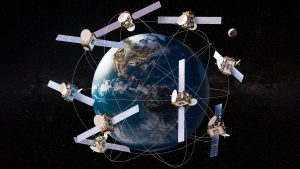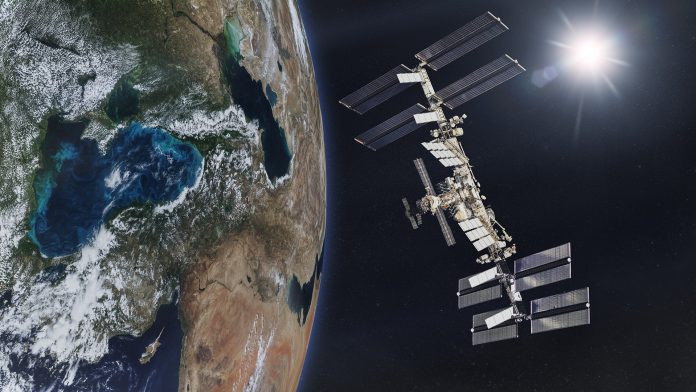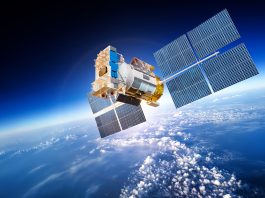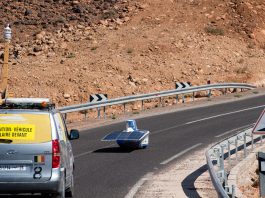Dave Nicoll, Business Development Director of Milexia, discusses identifying the right satellite communications option for your business and considers some reasons for avoiding LEO despite its high profile.
Satellite networks are essential for providing global communication, navigation, and observation services. But not all satellite choices are the same. Differing in altitude and orbit, as well as in price and latency, the various options present advantages and disadvantages according to the application you are talking about.
Satellite networks can be categorised into three main types: LEO, MEO and GEO. Let’s consider the pros and cons of each.
Low Earth Orbit (LEO)
LEO satellites are the closest to Earth, orbiting at an altitude of up to 2,000 km. They have the lowest latency (time taken for a signal to travel from the ground to the satellite and back), generally of about 0.05 of a second.
The main players in this sector include SpaceX, OneWeb, Amazon, and Telesat, all busy developing mega-constellations of thousands of satellites in a ‘space race’ to bring faster and better-performing internet connections to the masses. It is claimed that LEO constellations will inexpensively bridge the digital divide and provide internet access to remote and rural areas that may forever lack terrestrial infrastructure.
Developed by Elon Musk’s SpaceX initiative, Starlink’s growth, for example, has been nothing short of stellar. Within three years of its commercial launch in 2019, it had put more than 4,000 new satellites into space, providing high-speed internet services to over 1.5 million customers in 50 countries worldwide. Media attention has been enormous.
However, there are clearly one or two flaws in its business model. As more and more customers have crowded its network, service speeds have dropped. There has been much talk of poor customer service, criticism of the absence of installation services for customers who have never used satellite before, and grumbles about regular hikes in service pricing. Starlink appears not to be geared up to support industry-specific requirements in sectors that rely on satellite, such as the maritime, military and broadcast industries. It is not hard to imagine how, in time, its speedily won new users might get frustrated with its limitations and turn to traditional operators of MEO or GEO constellations for a better service, industry-specific connections, and more in-depth industry expertise.
Experts have raised concerns about the reliability, availability, and longevity of today’s LEO networks, especially in extreme weather conditions, high-density areas, and regions with complex terrain. For example, heavy rain or snow can degrade signal quality and cause interruptions, while tall buildings or mountains can block the line of sight between the user terminal and the satellite. LEO constellations also quickly degrade over time, as they are constantly exposed to the sun and are more susceptible to collision with other satellites and objects in space.
A LEO security health warning
LEO networks look fine for low-cost domestic broadband and non-critical data applications, but when it comes to industry-specific constellations, their capacity is limited.
But the biggest drawback of LEO constellations revolves around security. They present new opportunities for cybercriminals since their services involve not just the physical satellite but also the ground station that effectively controls it. It is only a matter of time before attackers get up to speed with their methods and target LEO connectivity with greater intensity, going after traffic in space by targeting this Earth-based infrastructure. In fact, there is evidence that this is already happening. Take, for example, the cyberattack against the Viasat satellite system at the start of Russia’s full-scale invasion of Ukraine last year.
The rapid growth we’ve seen in the LEO sector has been enabled by lowered barriers to entry in the form of ‘off the shelf’ solutions, reduced launch costs and advances in technology. But the uncomfortable truth is that for all the talk of ‘space as a service’, this rapid expansion has also created an easier attack surface for the bad guys.
Medium Earth Orbit (MEO)
MEO satellites orbit at altitudes of between 2,000 km and 20,000 km, lower than geostationary satellites but higher than LEO ones. They have a medium latency of about 0.1 of a second, depending on the size of the antenna. They can transmit data at high speeds of up to 1.6 Gbit/s and have a wider coverage area than LEO satellites, as they can see more of the Earth at a time.

MEO orbits and architectures allow for larger antennas that are capable of very high data rates, perfect for applications like ISP internet distribution, cruise liner applications and GSM/5G backhaul.
MEO satellites are best suited to industries with remote terrain where fibre connection is impossible, such as marine, energy, commercial maritime, mining, and humanitarian relief operations.
Geosynchronous Equatorial Orbit (GEO)
GEO satellites orbit at an altitude of 35,786 km above the equator, where they match the rotation of the Earth. This means they appear to be stationary in the sky, allowing them to provide constant coverage to a specific region of the Earth. They have the highest capacity density and the lowest cost per bit of all satellite network options.
They simplify the tracking of the satellite by its earth stations, which do not need to move their antennas to follow the satellite’s movement, unlike LEO and MEO.
Geostationary satellites are very good for point-to-point and point-to-multipoint private closed networks because they have a fixed position relative to the Earth and can cover a large area with a single beam. This means that they can provide a stable and secure connection between two locations without the need for a vulnerable public internet connection or communal ground stations. They can be used for broadcast applications from a single location to a very large number of end users.
There are many applications for GEO networks where high reliability and secure communication are essential, like banking transactions, corporate connectivity, governmental and military operations, and broadcasting, as well as disaster recovery first responder and telemedicine uses.
Conclusion
For domestic ‘broadband’ services such as you have at home, where the occasional drop-out and the odd planned outage are not unexpected, LEO constellations offer a low-cost small user terminal that will provide a good service.
For high data rate, low latency applications, the MEO network is a good bet. But for critical communications or secure networks where there is a requirement for high levels of support and availability, GEO satellite networks promise the same unprecedented service today and in the future that they always have.
Although superficially attractive for business use cases, LEO does not have the security and dependability of the other choices where anything mission-critical is involved. It is riding the crest of a wave of hype and expectation, driven by personalities like Elon Musk, but too many questions overhang it to make LEO a sound commercial choice for mission-critical data or always-on networks for applications where ‘communication is essential’ not a nice to have.








